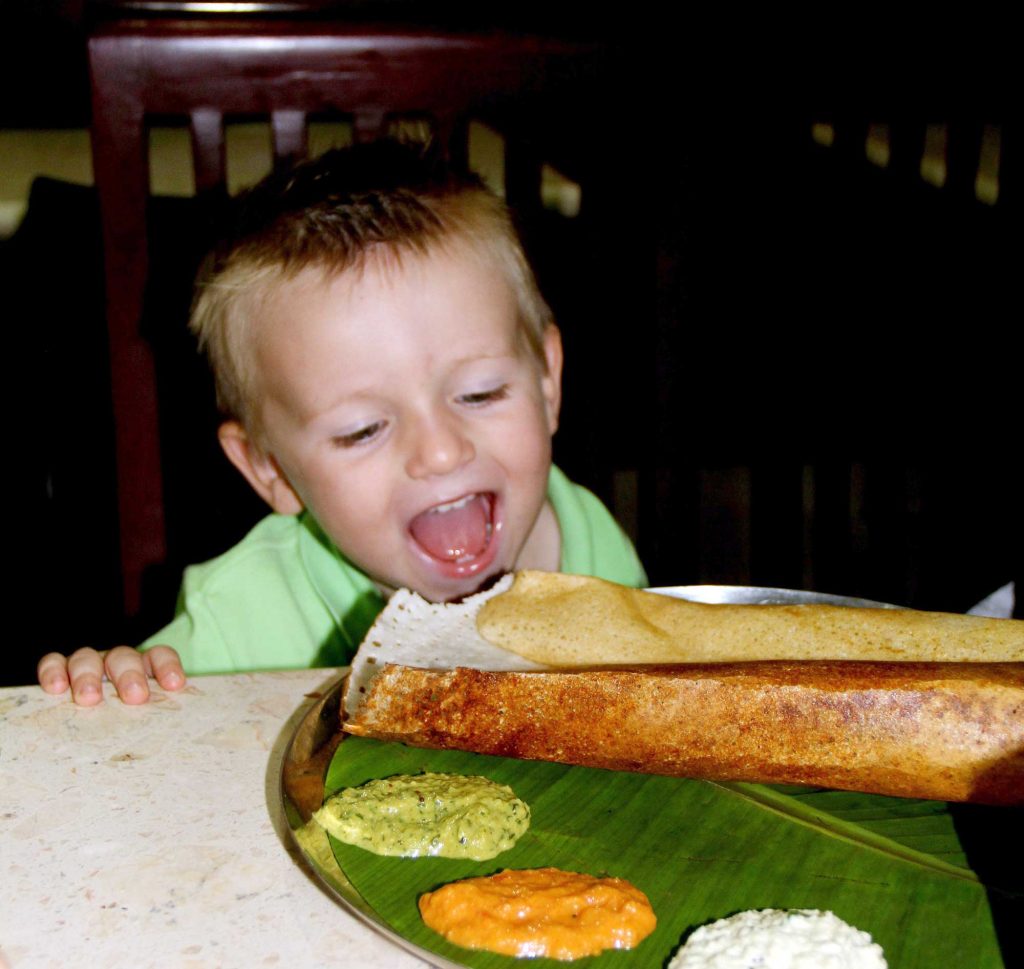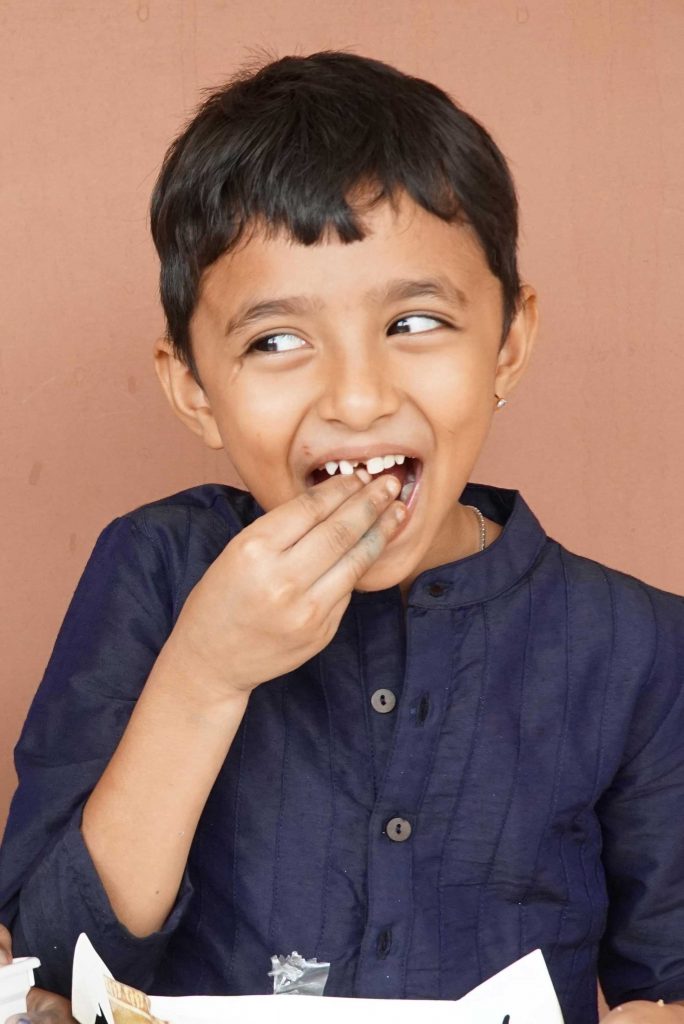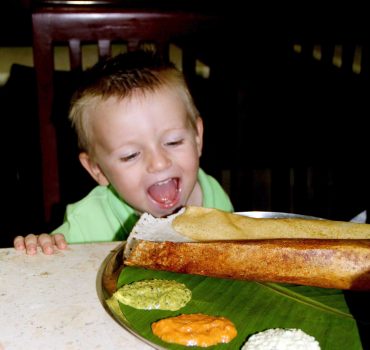No matter the age, for a parent, children’s food habit remains a concern all their life. While many today prefer to keep glued to the screen while eating, Antara Pandit shares the art of negotiation and how to navigate through this without forcing on the children anything they are uncomfortable with
 Kheema noodles, lemon rice with bhindi, roti with paneer butter masala and chicken nuggets are favourites with Dev and Shiv. Food disappears from their plate at the speed of lightening. These dishes were contributed to the menu by my five-year-old son Dev. To keep the idea of food interesting and fresh, I make it a point to change the food menu for the boys every four months. Most parents ensure that their children consume only healthy food. But sometimes we tend to forget that just like how we can get bored with certain foods over a period of time, so can they. We try to serve food which is full of healthy vegetables, proteins, grains, etc. and has a wide variety of textures and flavours. I truly believe that they will learn to eat and enjoy what they are exposed to most consistently.
Kheema noodles, lemon rice with bhindi, roti with paneer butter masala and chicken nuggets are favourites with Dev and Shiv. Food disappears from their plate at the speed of lightening. These dishes were contributed to the menu by my five-year-old son Dev. To keep the idea of food interesting and fresh, I make it a point to change the food menu for the boys every four months. Most parents ensure that their children consume only healthy food. But sometimes we tend to forget that just like how we can get bored with certain foods over a period of time, so can they. We try to serve food which is full of healthy vegetables, proteins, grains, etc. and has a wide variety of textures and flavours. I truly believe that they will learn to eat and enjoy what they are exposed to most consistently.
Childhood is a decisive period for laying the foundation of positive and life-long healthy eating habits and I believe that a critical part of this is involving kids in what they want to eat and when. Forcing them to eat something they do not like in a form they find repulsive is most of all unfair as we would not put anything in our mouths that we detest. So, their involvement in this process prevents any uproar and wastage of food. As all learning begins at home, so do experiences and exposure to food. In the Pandit household, ‘WHO’ they eat with and ‘WHEN’ they eat play an equally if not more of an important role than ‘WHAT’ they eat.
In the middle of the hustle and bustle of our daily lives, it is effortless to leave the kids sitting with an iPad at meal-times. I should know – I cannot count the number of times I have done this and continue to do so. While I am painfully aware of the undesirable effects of iPads during meal-times, reality strikes and deems it necessary now and then. I have read countless articles and heard endless stories from elders about lack of portion control while watching and eating, and in general it being a ‘very bad habit’. It is indeed rare for young kids to eat quietly by themselves without an interference of some sort – be it technology or a paranoid caretaker commanding every mouthful. I believe in ‘picking your battles’ and ‘everything in moderation’. Dev, who is now old enough to understand rationalisation, does not argue when I say no iPad on week days and now requests for story time instead. While there are days when I am sandwiched between meetings and running around like a headless chicken, there are also those days where I make time to spend time eating meals with my family, including the boys. They have their own kid’s table to sit at because the dining table is too high for them and even my 2.6-year-old Shiv considers a high chair to be beneath him. Their routines are similar, making it easy for the two best friends to eat their meals together, which I believe is vital to their relationship. Meal time is a social experience and instils certain values in kids. When they feel included, their meal habits and desire to eat develops and improves. Early dinners – at 6.30 p.m. – have always been a norm in our house, so we eat with the boys, leading to discussions on our days and what the plans are for the next day.
 Kids of all ages crave structure and consistency in their routines. It is one of the hardest parts of parenting, but also the most necessary. No doubt that home-cooked meals are the healthiest. We have complete control over what goes into the food and many parents today take it upon themselves to buy groceries and other ingredients themselves. As protection from harmful chemicals, which are present in many foods today, we try to buy more foods which are labelled organic. With an intense focus on nutrition and healthy eating, and eating at a restaurant being a rarity, we end up restricting their ability to process various types of food. I have realised that a large part of healthy eating is to expose children to everything so that when they leave and go into the real world, they do not have problems adapting.
Kids of all ages crave structure and consistency in their routines. It is one of the hardest parts of parenting, but also the most necessary. No doubt that home-cooked meals are the healthiest. We have complete control over what goes into the food and many parents today take it upon themselves to buy groceries and other ingredients themselves. As protection from harmful chemicals, which are present in many foods today, we try to buy more foods which are labelled organic. With an intense focus on nutrition and healthy eating, and eating at a restaurant being a rarity, we end up restricting their ability to process various types of food. I have realised that a large part of healthy eating is to expose children to everything so that when they leave and go into the real world, they do not have problems adapting.
